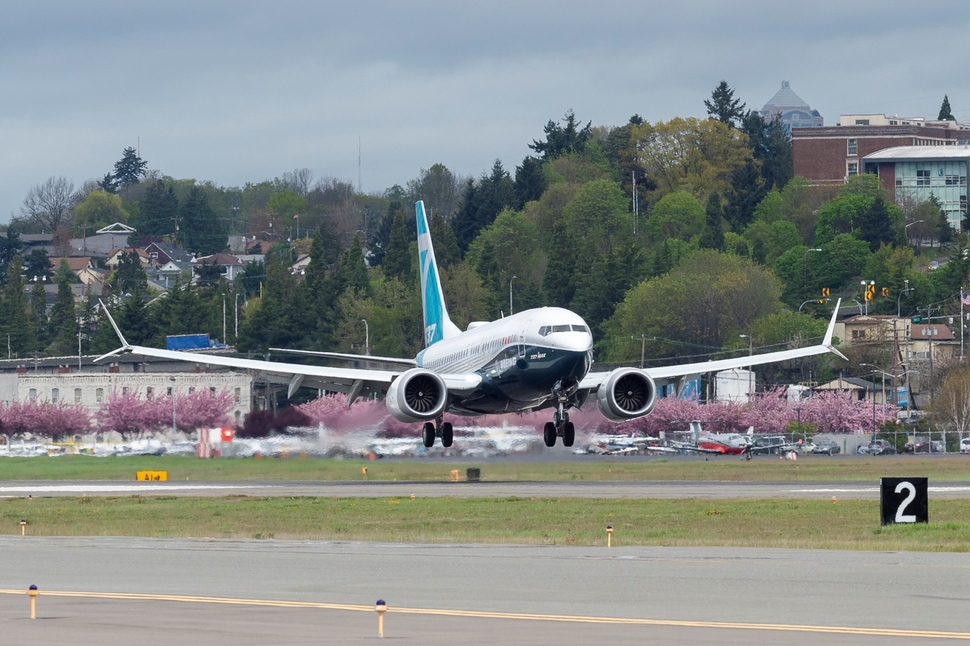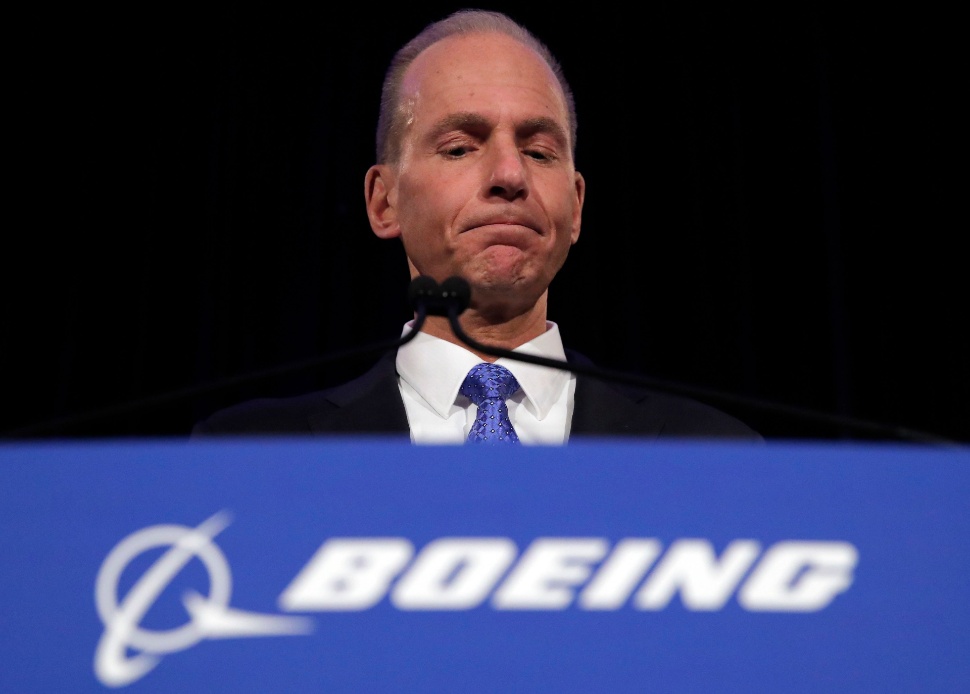Imagine, momentarily, that two Boeing 737 Max had not crashed, that 346 people had not died and that regulators had not grounded Boeing’s most popular aircraft. In such a world, Boeing would be riding high at this year’s Paris air show, brimming with optimism and promoting its 737 Max as a market winner.
Reality, however, has other plans. Although the company could land widebody orders or possibly announce news relating to its proposed new mid-market airplane (NMA), the 737 Max crisis overshadows all else.
What everyone wants to know is when the 737 Max will return to the skies. Boeing is probably unable to answer that question, for the 737 Max’s service return lies largely in the hands of the regulators who must sign off on Boeing’s software change. With so much uncertainty for Boeing, how might the company, long among the most admired in the aviation business, approach this year’s air show?
“There are fundamentally two lines of thinking,” says Michel Merluzeau, director at aerospace research and consulting company Air. “One is to carry on with lower-profile, subdued messages.” That approach would show respect for the two 737 Max tragedies, and indeed that has been Boeing’s approach since the second 737 Max crash – the Ethiopian Airlines aircraft that went down in March.
Alternatively, Boeing could begin shifting the conversation to positive aspects of its business, such as service industries growth and military sales success, Merluzeau says.

Boeing
MILITARY WINS
The company’s military division does have much to celebrate, at least outside quality concerns that are hampering the KC-46 military tanker programme. Boeing won several huge military contracts in 2018, including a $9.7 billion deal to supply the US air force with 351 T-X trainer jets and related equipment. T-X production could eventually balloon to some 1,000 aircraft, observers say.
Also last year, Boeing won a contract worth up to $2.4 billion to supply as many as 84 MH-139 helicopters to the US air force, and an $805 million deal to build four MQ-25A unmanned refuelling aircraft for the US navy.
Boeing’s 2018 revenue from defence, space and security-related sales jumped 13% year-on-year to $23.2 billion.
Meanwhile, Boeing has aggressively expanded its aircraft services work, which it has shifted into a dedicated business unit called Global Services. In 2016 chief executive Dennis Muilenburg said the restructuring put Boeing on course to generate $50 billion in annual service revenue within a decade.
Boeing remains far from that goal, although its services business has expanded rapidly, thanks partly to acquisitions of companies like flight software provider ForeFlight and parts provider KLX. Boeing has also formed a joint auxiliary power unit business with Safran called Initium Aerospace and a joint aircraft seating business with Adient Aerospace. Those acquisitions helped push Boeing’s 2018 Global Services revenue to $17 billion, up 17% in one year.
But no amount of positive news can clear the shadow cast by the 737 Max. The aircraft, owing to Boeing’s 4,620 unfilled orders, represents a massive chunk of the company’s future revenue.
UNANSWERED QUESTIONS
Boeing executives will undoubtedly face questions at Paris about the 737 Max and its troubled manoeuvring characteristics augmentation system (MCAS), although answers may be few due to the ongoing nature of the investigations.
The company has answered few questions in the months since the first crash, of a Lion Air 737 Max in March. It has also received pointed criticism for its design of MCAS – the system implicated in both crashes – and for not initially telling pilots the system existed. The Federal Aviation Administration has taken fire over its certification of the aircraft.
During a brief press conference in late April, Muilenburg expressed contrition but defended Boeing’s designs while conceding that MCAS could be made better. He also insisted pilots can counter MCAS easily with a memorised checklist – a point many pilots themselves confirm.

Jim Young/AP/REX/Shutterstock
Now Boeing has completed a software update it says makes MCAS rely on two sensors and prevent the system from causing the extreme nose-down inputs that preceded the two crashes. When or if regulators might approve the software fix remains unknown.
Meanwhile, whether Boeing plans any major commercial aircraft announcements at Paris also remains uncertain, although any orders would surely provide a needed boost. New orders for 737 Max understandably screeched to a halt following the Ethiopian crash, and in April Boeing slashed its order book by 196 737s, due partly to the collapse of India’s Jet Airways.
Boeing’s order activity has been slow for other models, too, and it landed no new commercial aircraft orders in April. The 787 remains a hit, with 584 aircraft in the backlog, but demand has been moderate for the in-development 777X, which will soon become the company’s flagship.
Launched at the Dubai air show in 2013, Boeing insists the 777X programme remains on track for first flight this year, followed by certification and deliveries. The 777-9 will be the first out, followed by the smaller 777-8.

Boeing
The 777X has new composite wings, larger windows, a wider cabin and GE Aviation GE9X powerplants, which have larger-diameter fans than any commercial turbofan engine. The Dash 9 variant will have capacity for 425 seats and 7,525 nm (13,940km) range, while the 777-8 will be capable of carrying up to 375 passengers and have a 8,690nm range, Boeing says.
As of April, Boeing had 344 777X orders, including at least 281 of the baseline 777-9, according to Cirium’s Fleets Analyzer. Customers include a half dozen global airlines based in the Middle East and Asia, including launch customer Emirates, ANA, Cathay Pacific, Etihad Airways, Qatar Airways and Singapore Airlines. British Airways and Lufthansa have placed orders too.
Observers describe the 777X as an excellent aircraft and formidable competitor to the A350. Its extreme range and heavy payload capacity make it ideal for certain ultra-long routes between major cities, they say. But industry watchers also suspect the 777X might be a bit ahead of its time, noting many airlines recently completed widebody replacement programmes. And, analysts note, aircraft like 777-300ERs have many years of service life remaining.
WHAT'S NEXT?
The 777X may be Boeing’s next aircraft, but bigger questions remain about which model will carry Boeing into the future. For several years, Boeing has hinted that will be the NMA, a 200-270-seat twinjet with 4,000-5,000nm range. Boeing has pitched the NMA as a 757 replacement and a conduit to transform its production system in preparation for the next big project, which observers have speculated could be a 737 replacement. Signals earlier this year suggested Boeing was leaning towards moving forward with the NMA, possibly with a decision to offer the aircraft this year, an official programme launch next year and entry into service in 2025.
The 737 Max crashes and grounding have brought more uncertainty to the already-uncertain NMA. Boeing executives have spoken little about the aircraft since the Ethiopian Max crash; when asked about the NMA in April, Muilenburg stressed that the programme was progressing but that the priority was the Max: “Certainly the highest priority for us is the 737 Max’s safe return to service. We have prioritised our resources accordingly as we continue to work on our NMA effort in parallel,” he said.
As if all those open items are not enough, Boeing is also working to close two proposed joint ventures – one commercial, one military – with Brazilian airframer Embraer. The commercial deal includes Boeing purchasing 80% of Embraer’s commercial unit for $4.2 billion, leaving Embraer with the remaining 20%, while the military venture involves joint promotion and development of Embraer’s KC-390 transport.
The companies say the agreements will close by year end.
2019parisairshow
Read all the latest news and information from the 2019 Paris Air Show on our dedicated page
Source: Flight International






















